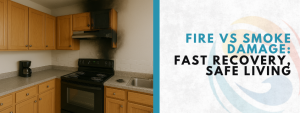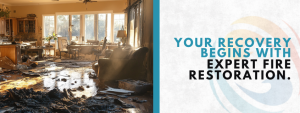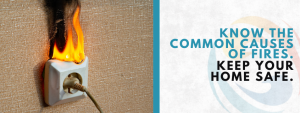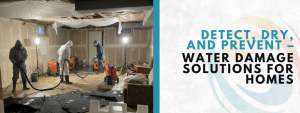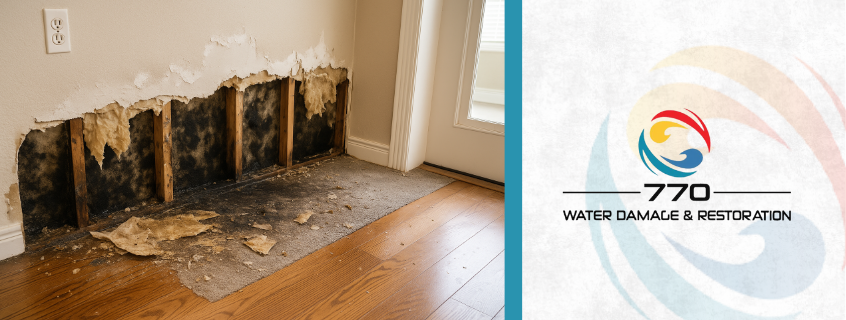
It’s Saturday morning, and you’re staring at a leaky faucet. You’ve watched three how-to videos, bought a shiny new wrench, and convinced yourself this is the day you’ll conquer plumbing. But hours later, you’re ankle-deep in water, the cabinet’s swollen, and the problem is worse. Sound familiar? This is one of those classic diy fixes that go wrong—a scenario that starts with good intentions but ends with unexpected damage, stress, and usually, a call to a professional.
Many homeowners believe doing repairs on their own will save money, but the opposite often happens. Let’s explore the most common situations where DIY efforts backfire and why calling in the pros might be your best move.
The Hidden Dangers of DIY Plumbing Fixes
One of the biggest misconceptions in home maintenance is thinking all fixes are created equal. But the truth is, plumbing projects often become diy fixes that go wrong before you even realize it.
You might try to fix a dripping pipe under the sink, not realizing your temporary patch may push water into the walls. The next day? Your baseboards are swelling, and a musty smell starts creeping in. That small leak you overlooked could be feeding a mold colony inside your walls.
If you’re noticing puddles, stained ceilings, or warped floors, it’s time to think bigger. Consider emergency cleanup and restoration services before water damage costs multiply.
Common Signs You Need a Plumbing Pro:
- Persistent leaks even after DIY repairs
- Discolored patches on ceilings or walls
- Sudden water pressure drops
- Musty smells around sinks or tubs
Drywall Patching Disasters and What Lies Beneath
You spot a hole in the wall and think, “This’ll be easy.” A little putty, paint, and you’re done, right? But drywall hides secrets. Behind what looks like a small hole might be water damage, electrical issues, or mold.
Applying joint compound and paint without checking what’s behind it leads to the quick reappearance of bubbling or yellow patches. These diy fixes that go wrong often fail not because of poor effort, but because you’re only solving the surface issue.
Why DIY Drywall Patching Fails:
- Missed mold or water behind the wall
- Poor sanding and feathering techniques
- Skipped primer results in bubbling paint
When DIY Electrical Repairs Get Shocking
Replacing a light switch may seem like a simple task. But forgetting to turn off the breaker or mismatching ground and neutral wires can lead to a short circuit—or worse, a fire. With electricity, there’s no margin for error.
Electrical mistakes are among the most dangerous diy fixes that go wrong because they may not show up immediately. A wire installed incorrectly today could cause a fire six months from now.
Common Electrical DIY Mistakes:
- Swapping outlets without grounding
- Overloading a circuit
- Skipping GFCI installation in wet areas
- Using the wrong wire gauge
The Flooring Fix That Backfires
Installing vinyl, laminate, or tile flooring might seem straightforward. But without proper leveling, sealing, or underlayment, floors buckle, crack, or squeak within weeks.
Improperly sealed flooring also allows moisture to sneak in and cause long-term damage, especially in kitchens and bathrooms. It’s another case of diy fixes that go wrong becoming more costly than calling in a pro from the start.
Checklist Before Starting DIY Flooring:
- Is the subfloor level and clean?
- Do you have proper spacing and expansion gaps?
- Are you using the right sealant for your floor type?
Painting Projects That Peel and Flake
Painting is a favorite DIY project, but it often leads to patchy results. Lap marks, bubbling paint, and wrong finishes are common signs of diy fixes that go wrong. Choosing the wrong finish or skipping the primer in a humid room like the bathroom? That paint will peel in no time.
Painting Tips to Avoid DIY Disasters:
- Always use primer for new or glossy surfaces
- Choose satin or semi-gloss in high-moisture areas
- Work in consistent strokes to avoid roller marks
Roof Repairs: Dangerous and Difficult
Climbing up on your roof with a few shingles and a bucket of tar is risky. Not just because of the height, but because roofing requires technique and knowledge. If your patch job causes poor alignment or incorrect flashing, you may invite leaks and interior water damage.
DIY roofing is a leading example of diy fixes that go wrong—and one that can cost you your safety and thousands in repairs.
Common DIY Roof Mistakes and Outcomes:
| Mistake | Problem Created |
| Misaligned shingles | Water leaks |
| Poor flashing seals | Mold growth in attic |
| Wrong nailing technique | Shingle blow-off during storms |
| Skipping gutter cleaning | Overflow and water damage |
Structural Changes That Compromise Your Home
Removing a wall to create an open space feels like an upgrade—but not if it’s load-bearing. DIY renovations involving framing or support beams are among the most costly diy fixes that go wrong. Even minor mistakes can lead to sagging ceilings or cracked drywall.
Things You Should Never DIY:
- Knocking down structural walls
- Foundation crack repairs
- Gas line rerouting
- HVAC system overhauls
Some of these mistakes can also void your home insurance, especially if they cause water or fire damage later on. If your policy finds fault in your repair method, it might not cover your claim.
Instead of risking that, consider a reliable disaster recovery team that understands how to handle both the damage and the paperwork.
DIY Appliance Repairs That Flood or Fry Your Home
Appliance repairs can go south quickly. From misplacing a drain hose in your washer to tampering with the sealed system of your fridge, many DIY appliance projects turn into classic diy fixes that go wrong.
If you’ve ever smelled burning plastic or returned to a puddle near your kitchen appliances, you know how fast a small fix can cause big problems.
Appliances You Shouldn’t DIY:
- Refrigerators (sealed systems)
- Washers and dryers (hose + electrical)
- Dishwashers (drainage and seals)
Decor Disasters: Hanging Projects That Wreck Your Walls
Even simple decor tasks can take a turn. Hanging floating shelves, heavy mirrors, or curtain rods into drywall without anchors or studs leads to sagging and crashes. Suddenly, your sleek design becomes a wall repair issue.
Avoid These Hanging Mistakes:
- Using nails instead of anchors for heavy items
- Not locating studs before drilling
- Relying on command strips for long-term support
They may seem cosmetic, but these are among the quiet diy fixes that go wrong that often require a patch job later.
When to Call the Pros (and Avoid a Bigger Mess)
Not all projects need a specialist, but knowing when to call one is key. If you smell mold, see water pooling, or can’t keep your electrical system running right, don’t wait. Catching damage early helps prevent further loss, especially from water, which spreads fast.
If you already see signs of moisture in the walls or flooring, the damage may already be deeper than you think. To stop it from worsening, trust professional restoration services you can rely on.
Final Thoughts: Confidence Is Good, But Caution Saves Money
Doing things on your own can be rewarding—but only when they’re done right. While painting a fence or planting flowers are low-risk and satisfying, other tasks need experience, tools, and professional care.
DIY fixes that go wrong don’t start that way—they begin with the best of intentions. But when the results put your home or safety at risk, it’s better to bring in someone who’s been trained for the job.So before you grab the wrench or hammer, ask yourself:
“Do I know exactly what I’m doing?”
If the answer is “maybe,” that’s your cue to call in the pros.
Frequently Asked Questions About DIY Fixes That Go Wrong
What should I do if my DIY repair made the problem worse?
Stop working on it immediately and avoid trying additional fixes that may cause more damage. It’s best to contact a licensed professional who can assess and correct the issue safely.
How do I know if a repair is safe to do on my own?
If it involves electricity, plumbing, gas lines, or structural elements, it’s safer to call a pro. Only attempt DIY repairs that are low-risk and don’t impact your home’s safety or core systems.
Can a failed DIY fix void my home insurance?
Yes, if your repair leads to further damage or safety issues, your claim may be denied. Insurance companies often exclude coverage for non-professional work.
What are signs that water damage has started after a DIY mistake?
Look for stains on walls or ceilings, musty smells, or soft and warped flooring. These signs often appear days or weeks after the initial problem.
Are there home repairs I can safely try myself?
Yes—painting, assembling furniture, or hanging light décor are generally safe DIY projects. Just make sure to follow basic safety rules and use the right tools.


